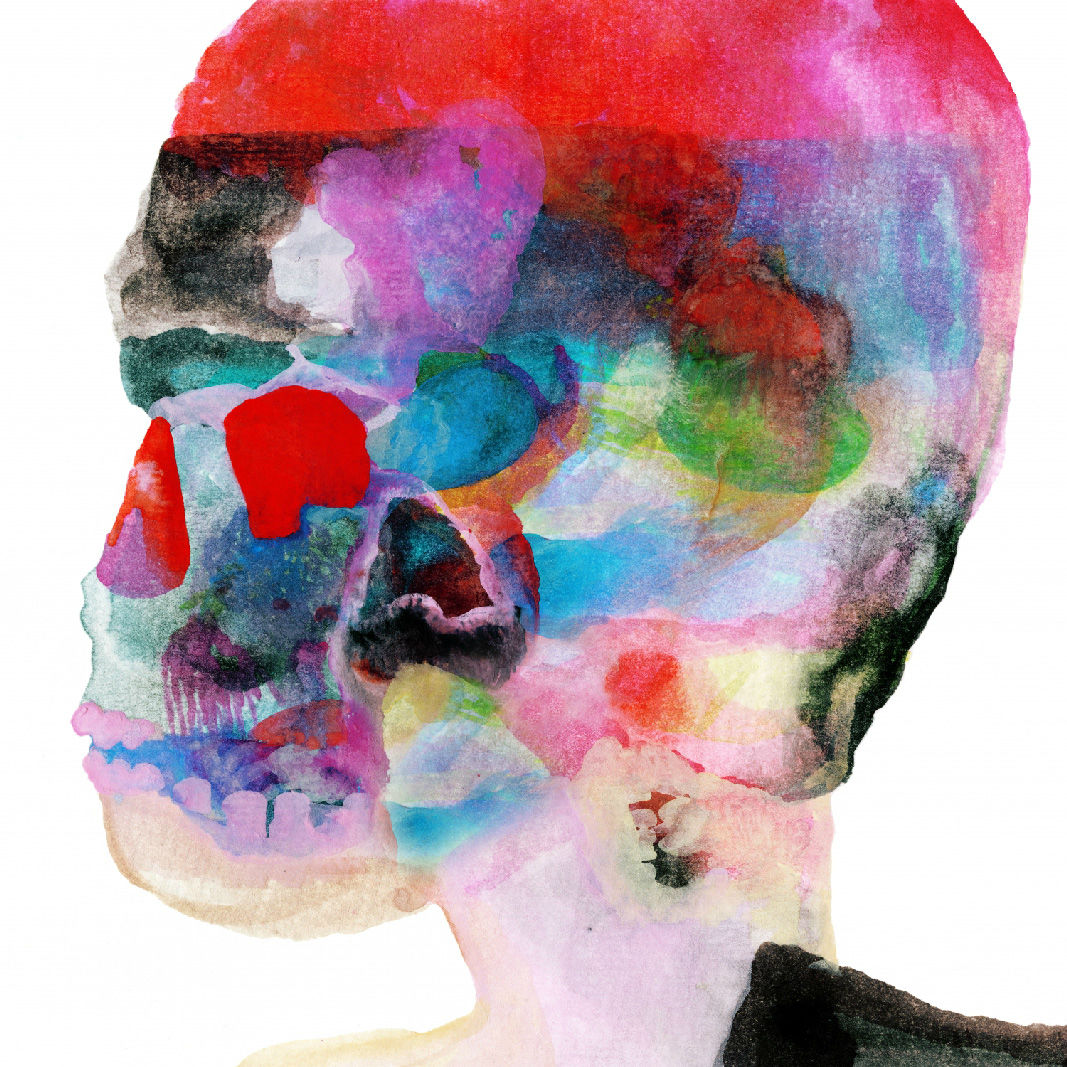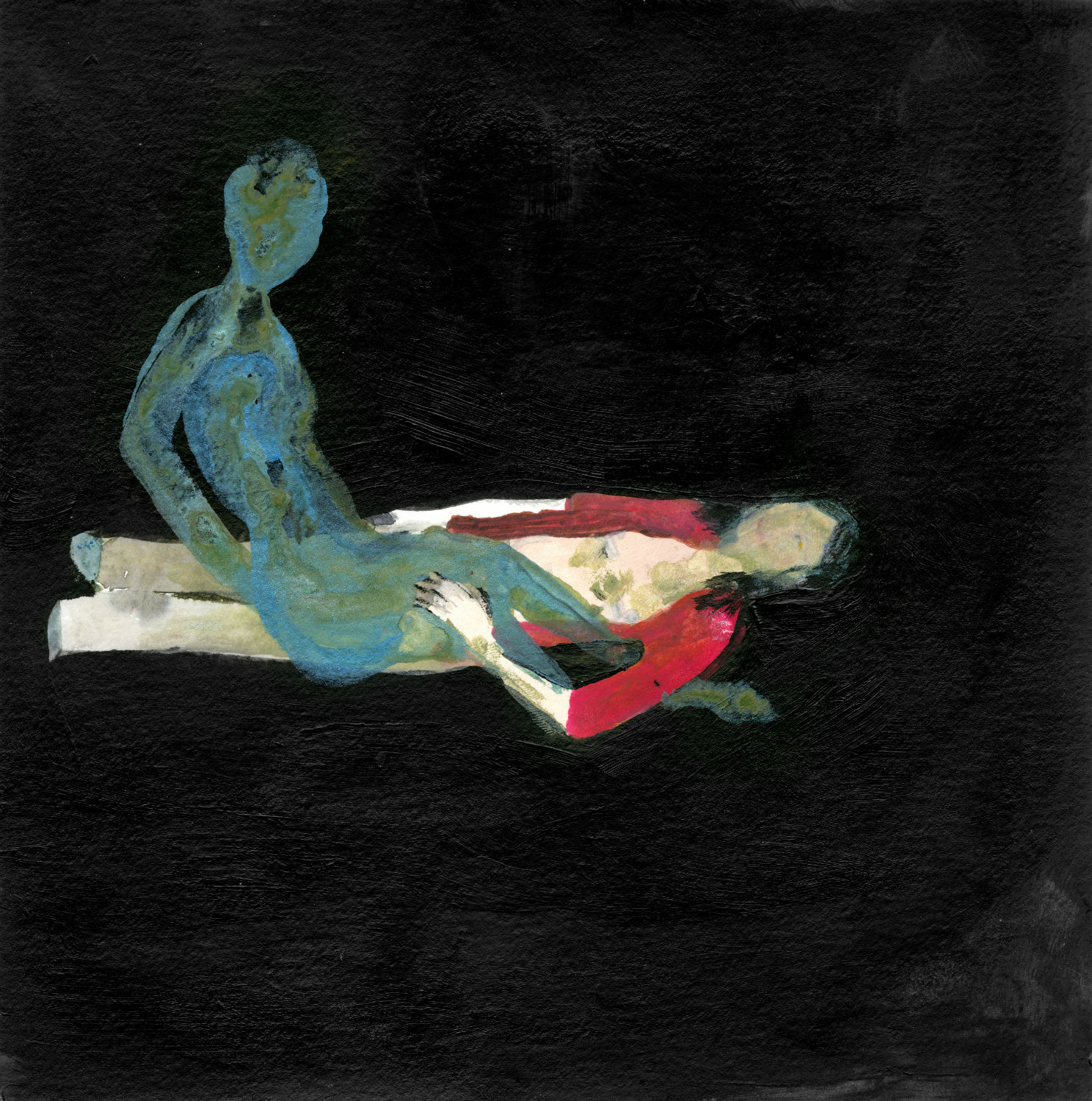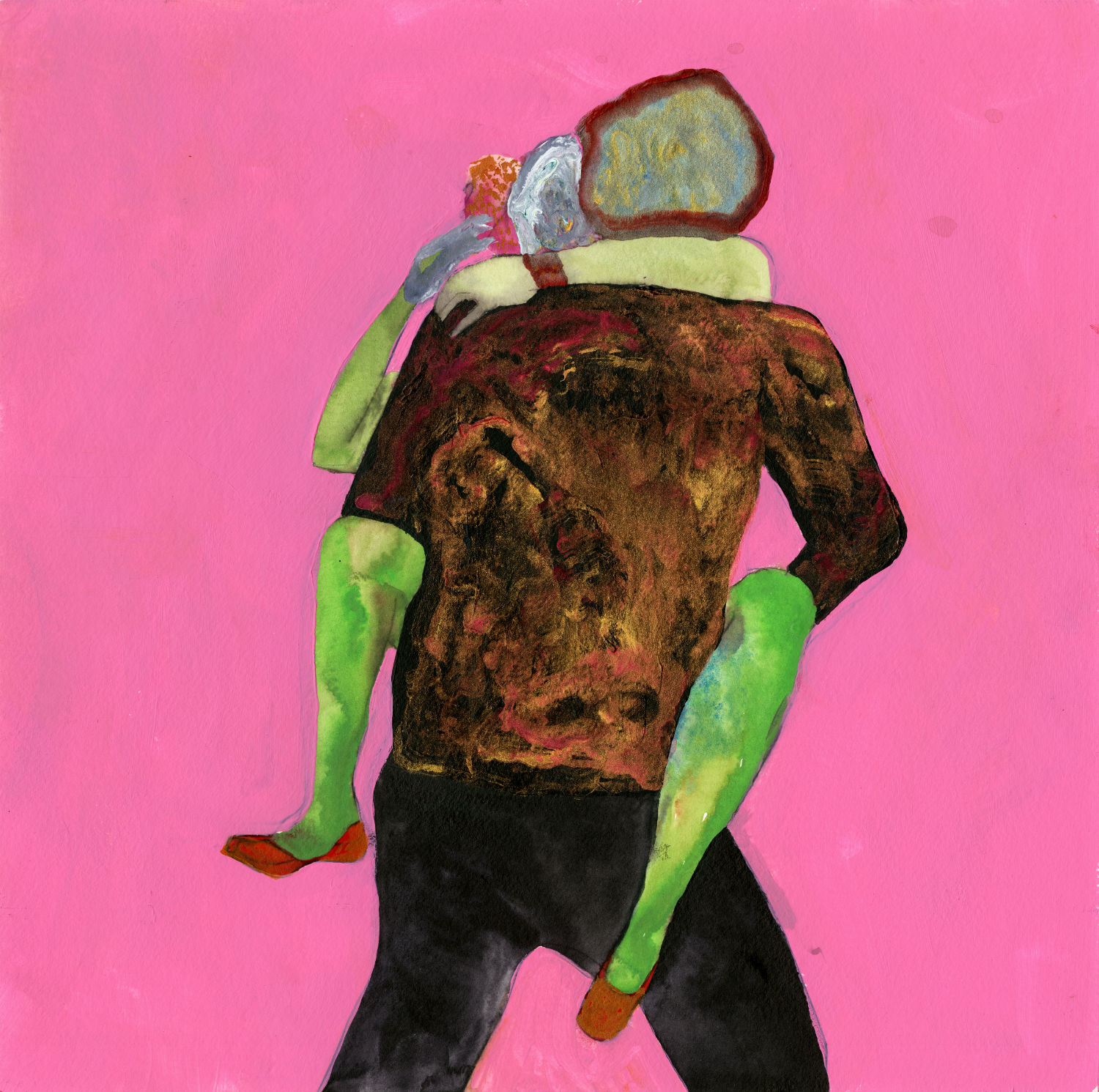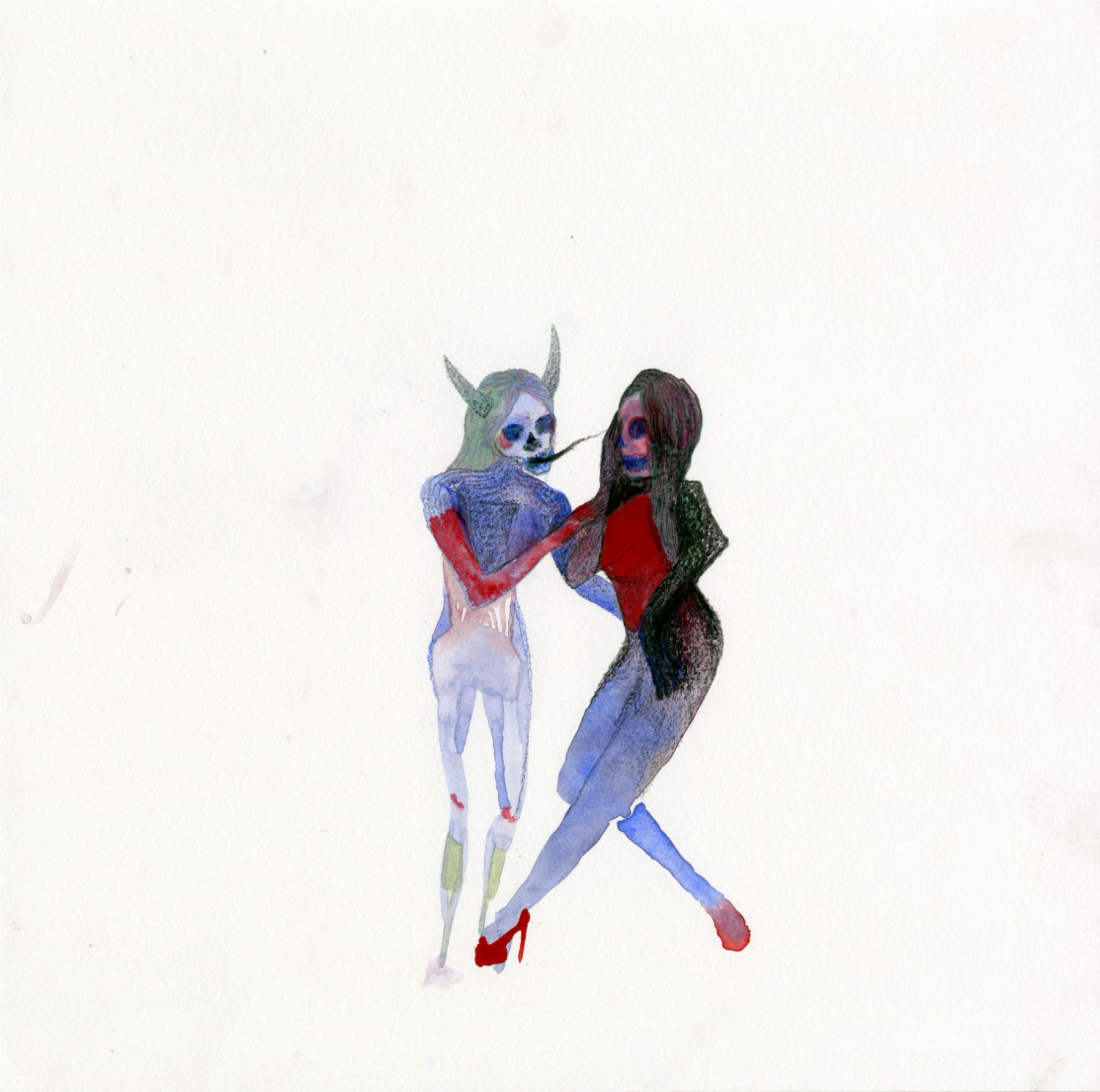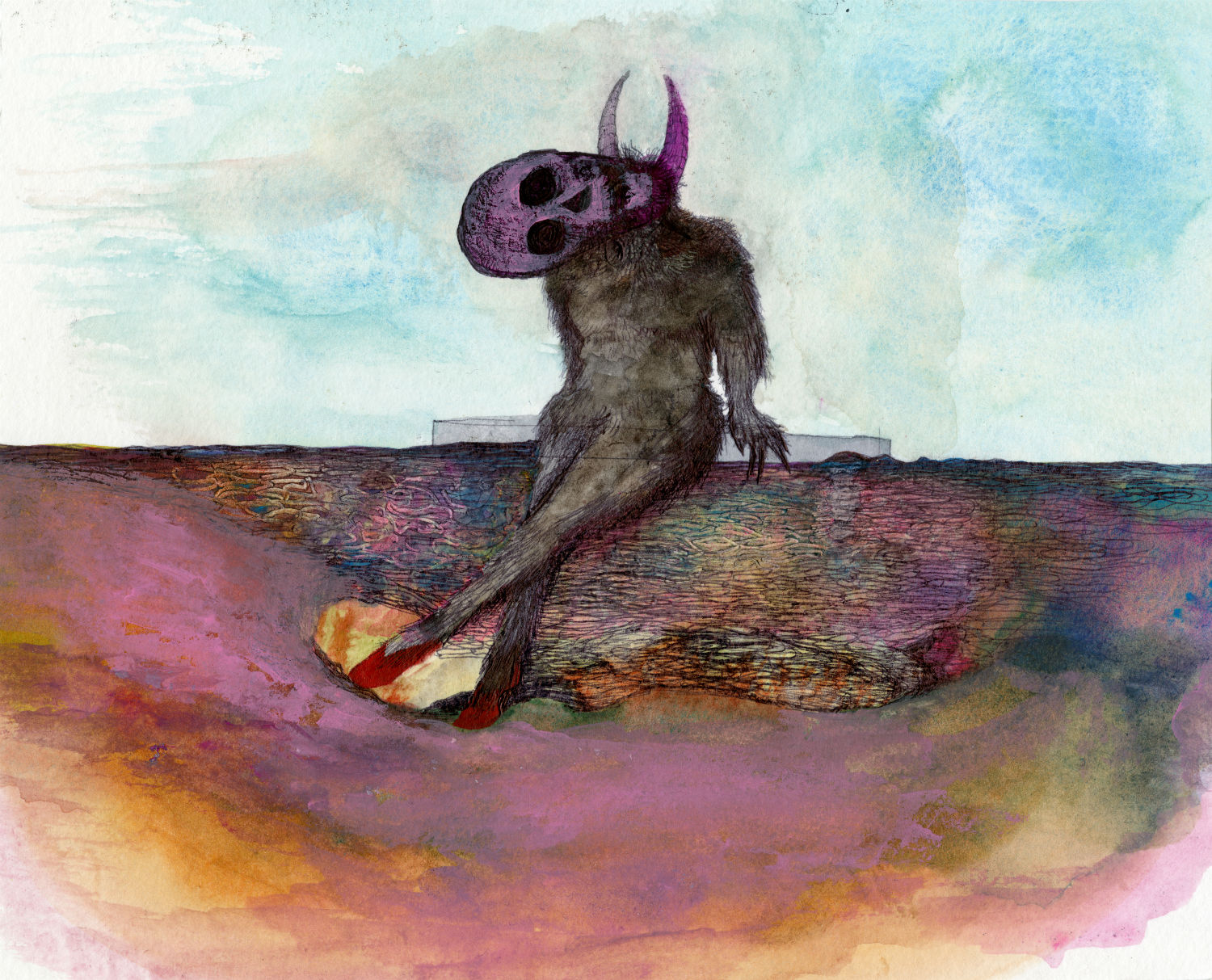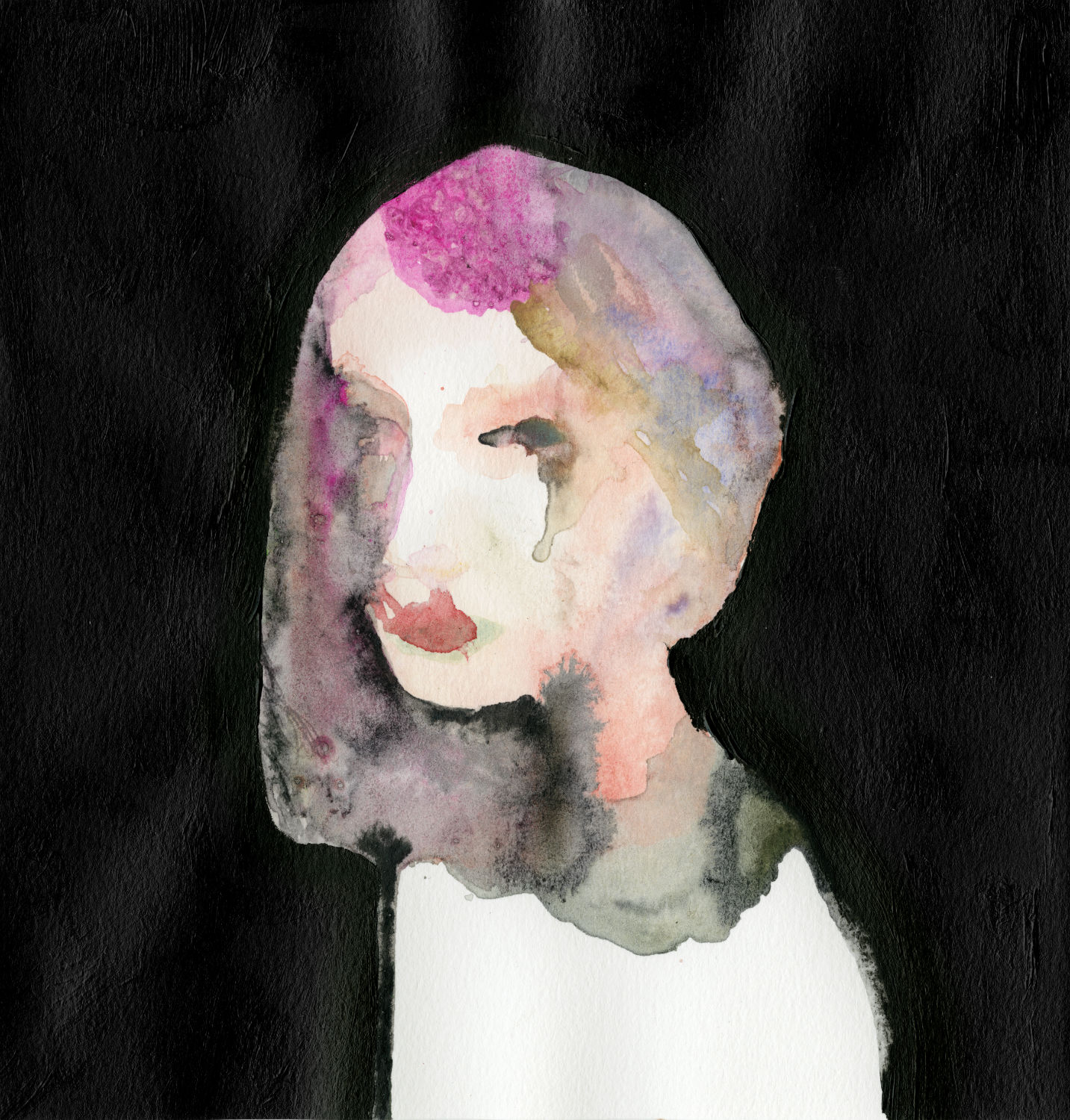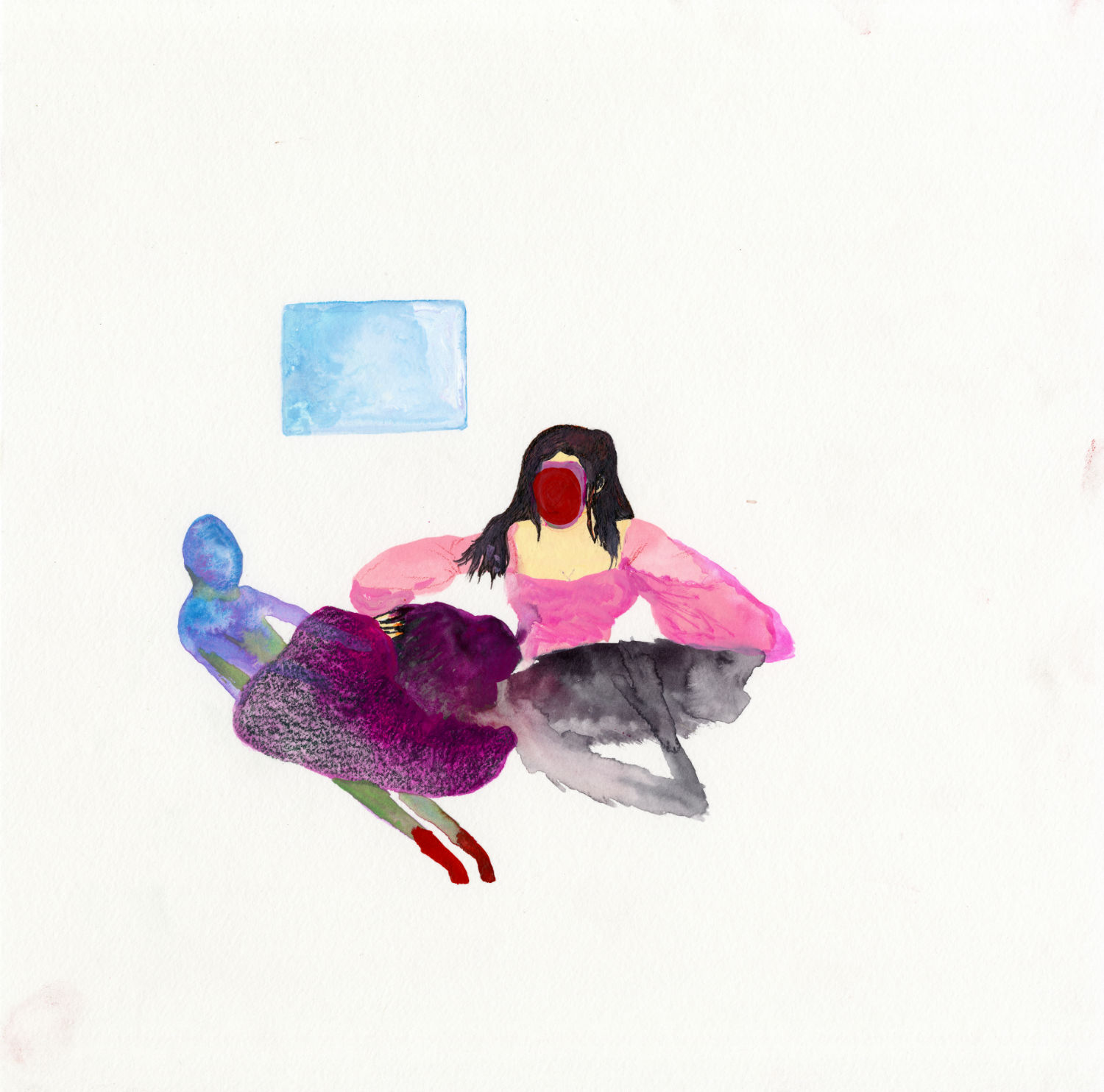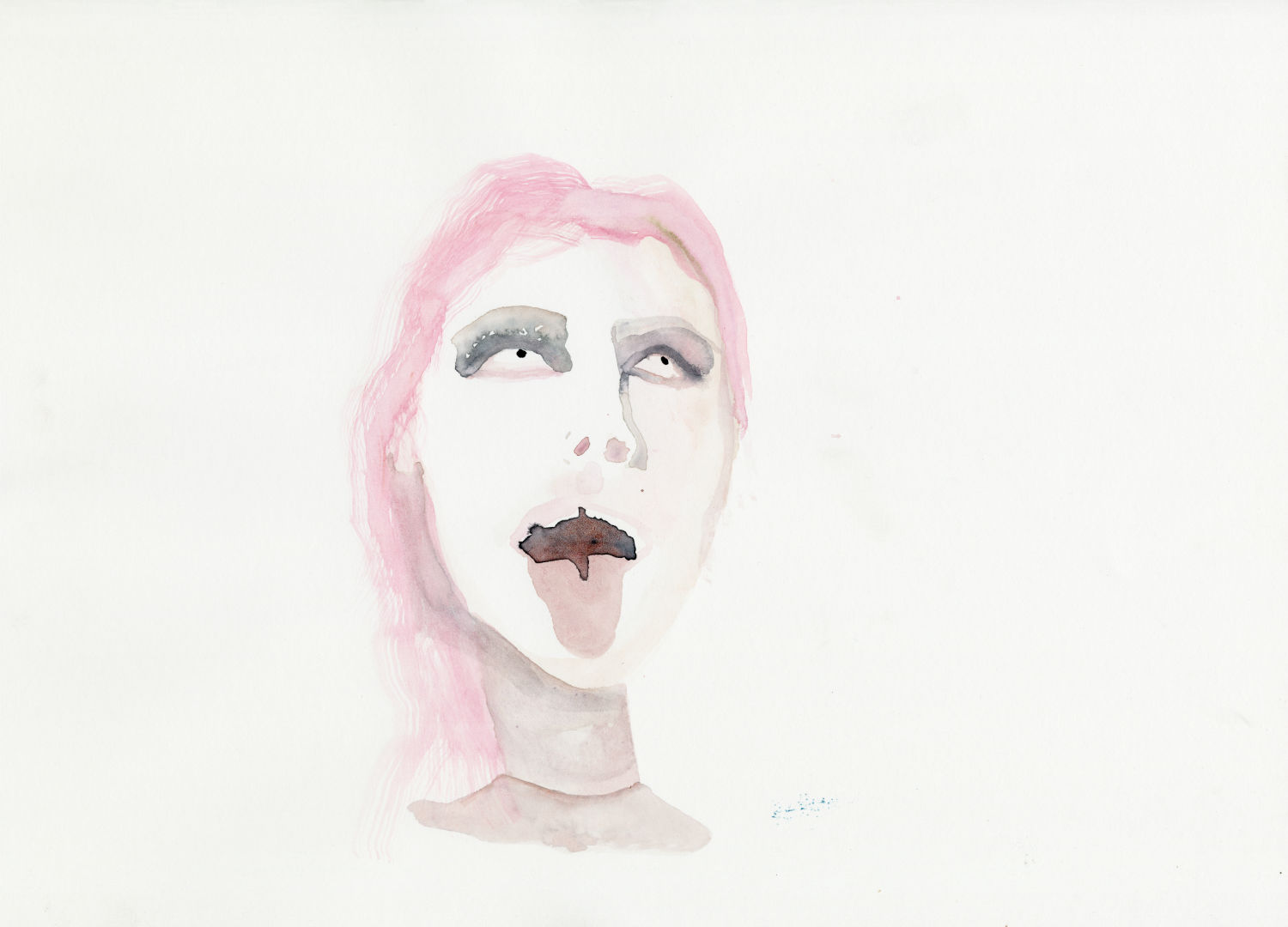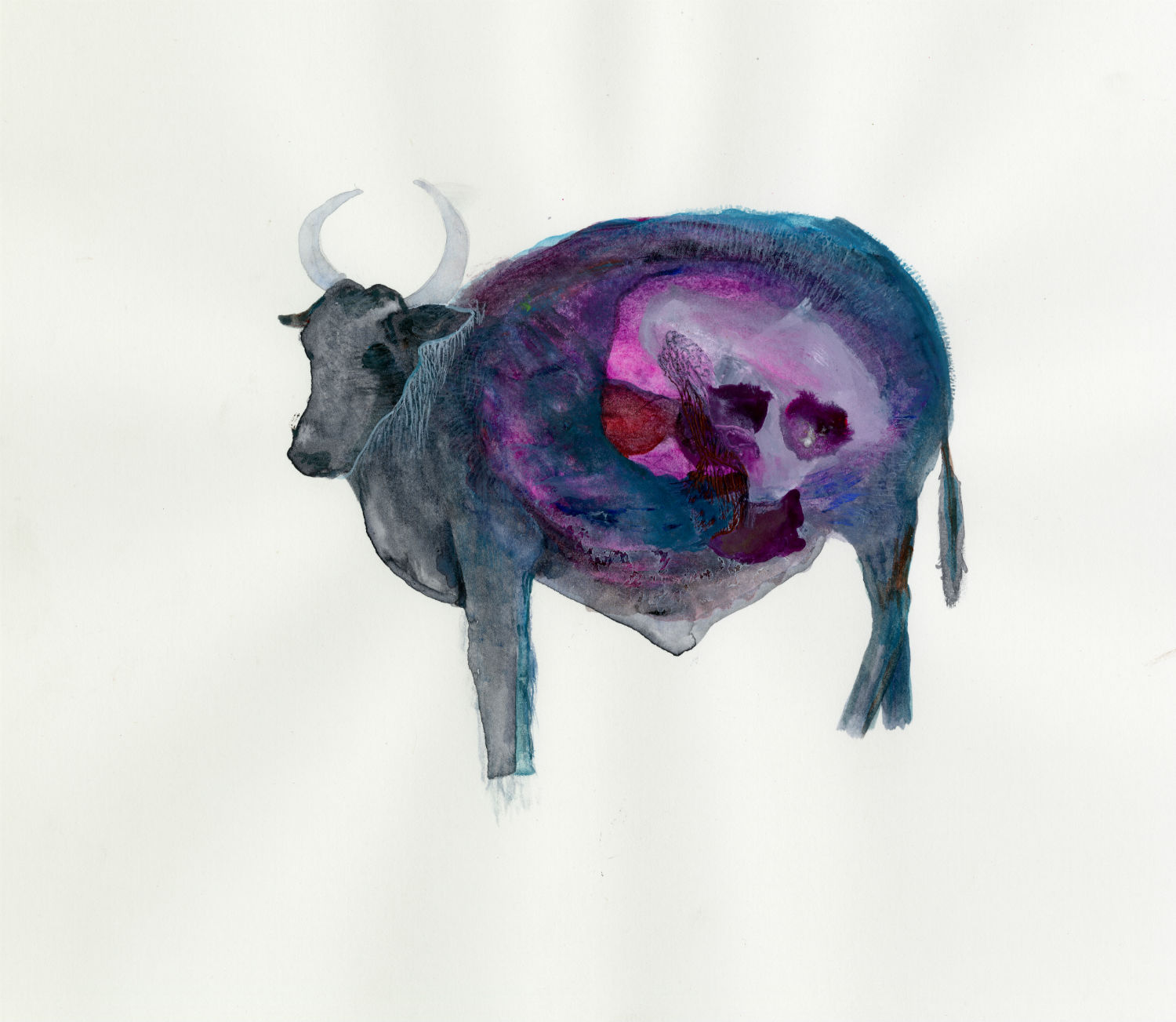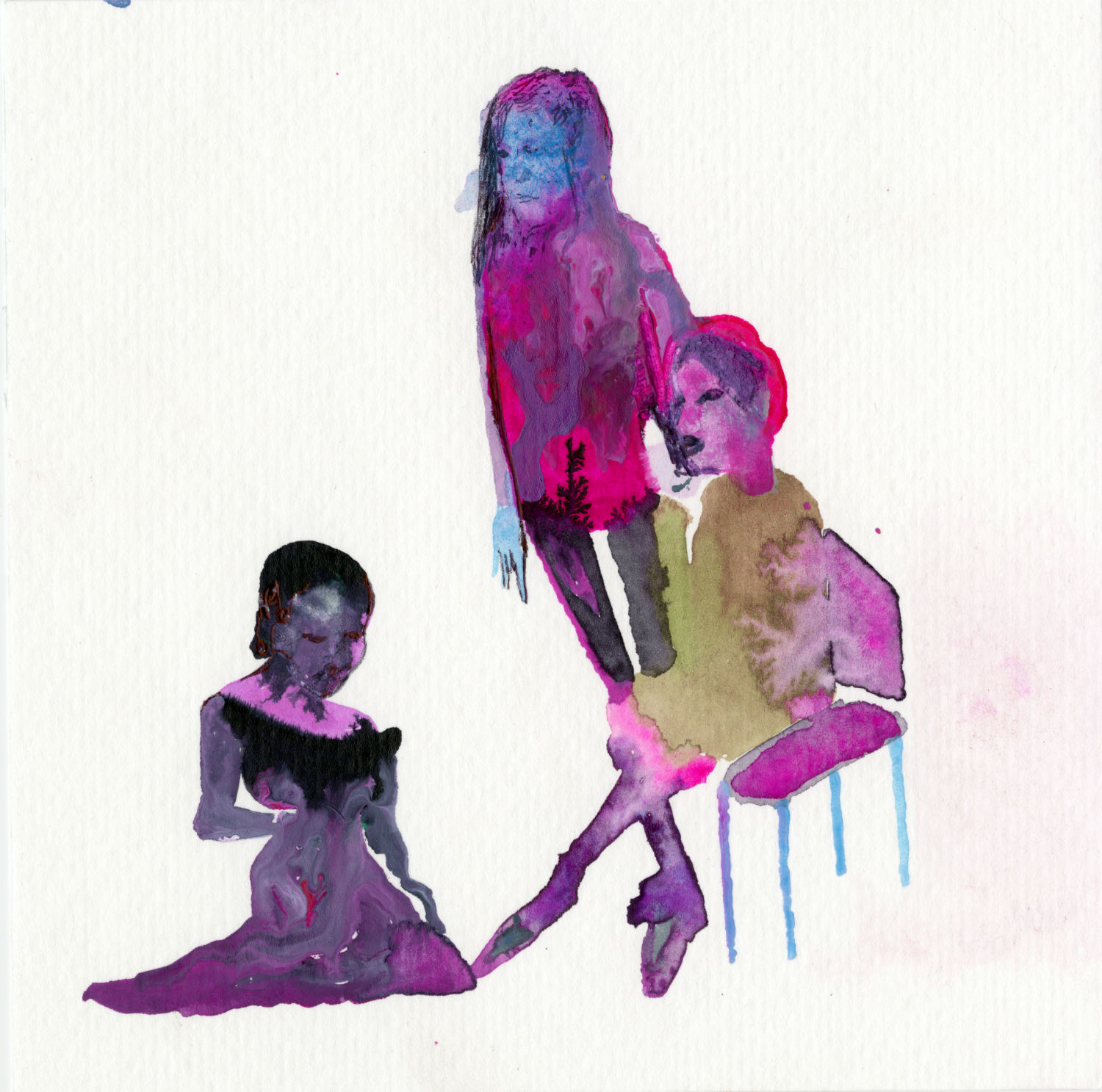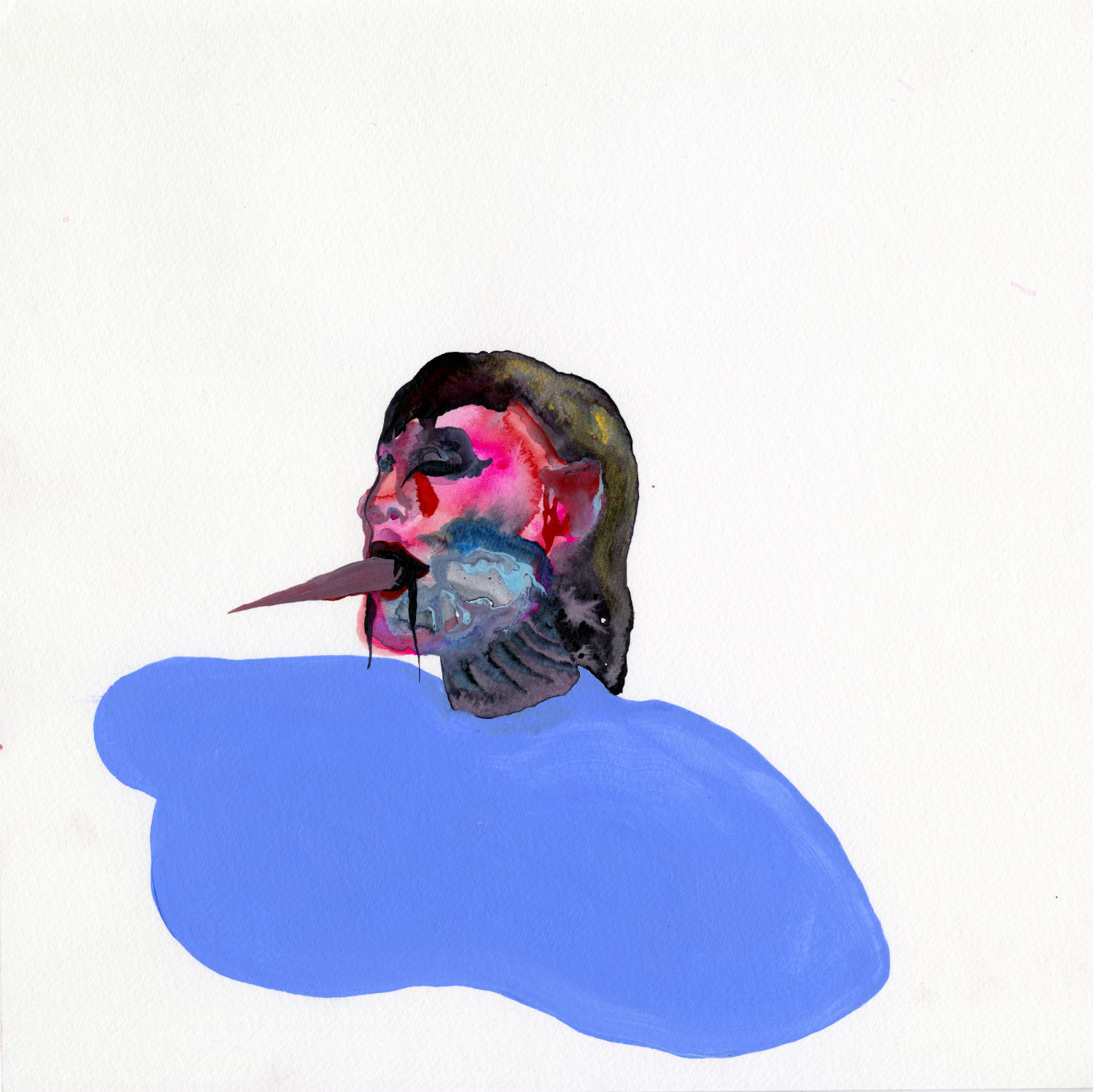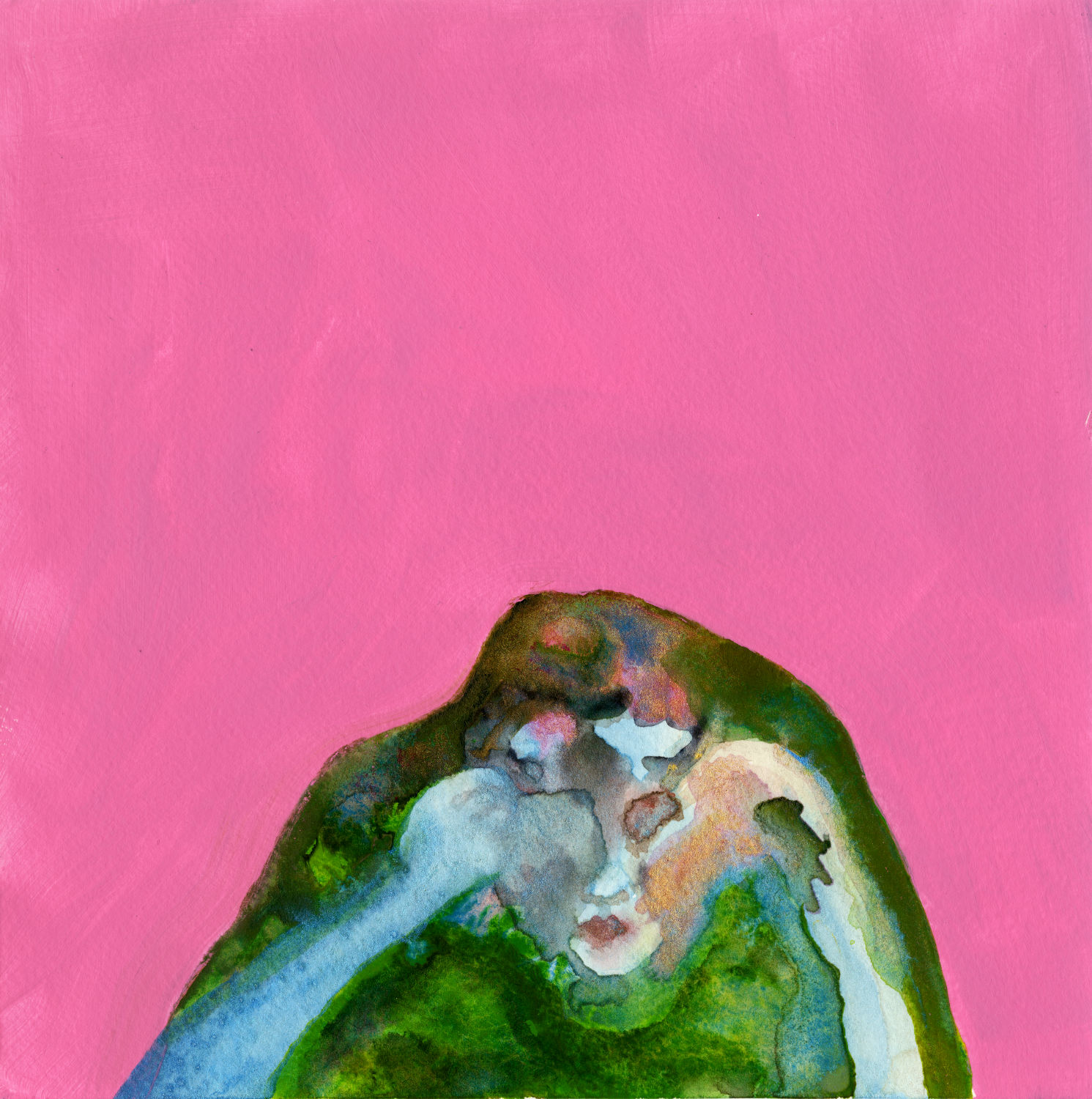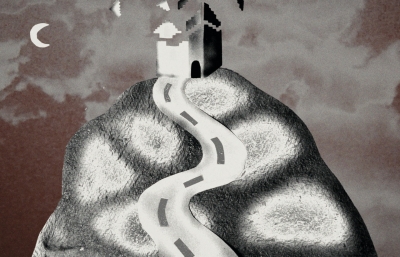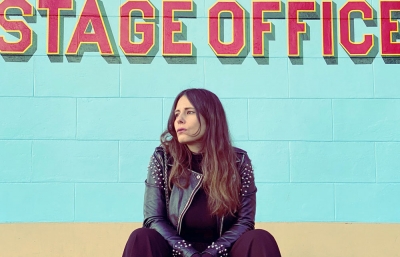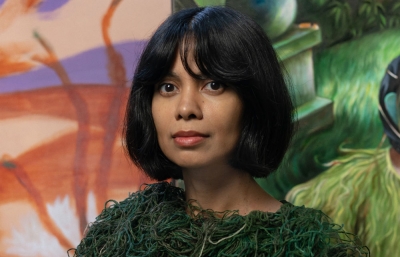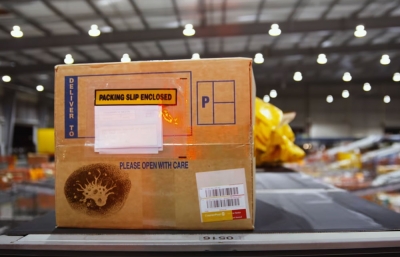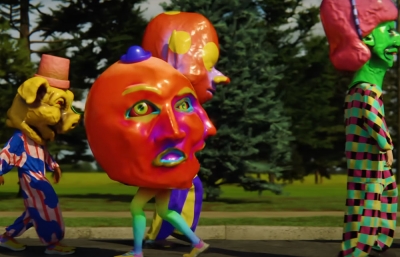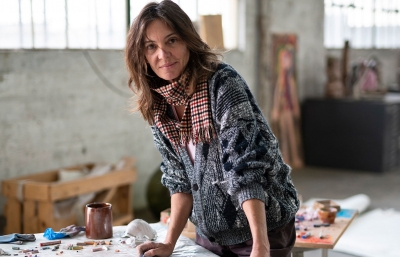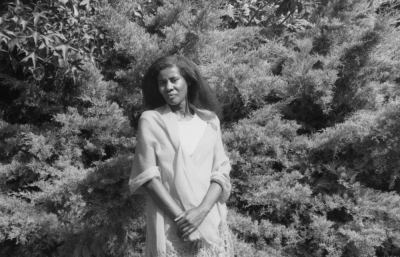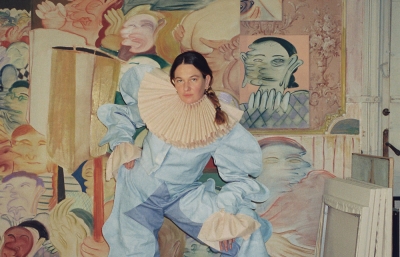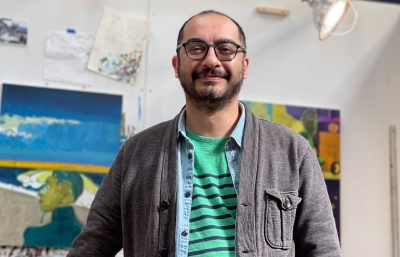The last time Spoon frontman Britt Daniel sat down with Juxtapoz to discuss album cover art, he explained that his process involved “thinking about what the album artwork will look like the whole way through while making the record, but not really getting a chance to focus on it until we’re done with the music.” The band’s newest record, Hot Thoughts, was a little different.
When gathering imagery while recording, Daniel came across watercolor skull paintings on his friend Christine Marlene’s Instagram account and added them to his growing inspiration file. With the record complete, this image captured the band’s mood and sparked a collaboration with Marlene and Spoon that accompanied each album track. We got together with Daniel and Marlene to discuss skull history, getting back into a groove, and happy accidents.
Evan Pricco: This question never gets old, especially when talking art and music, and specifically, album cover artwork. Can you describe the journey from writing music to making an album? And when you first saw Christine’s work, did you envision album art?
Britt Daniel: Maybe for the last four to five months we were working on the record, anytime I would see either a piece of art or direction in a piece of art that had me thinking, I would take a picture and save it to this large file of images. Christine is a friend, but I wasn’t actually familiar with her paintings until I got on her Instagram.
Then I saw the skull images she made, which was probably last summer. I can’t say that I immediately thought, “This is going to be the record cover,” but I thought it was amazing and put it aside with other things I collected. When I came back to all the images sometime later and started to think about the title of the record, Hot Thoughts, I looked at the skull image again and felt like it was perfect. It’s an amazing image because it’s grotesque in some ways but beautiful, and I hadn’t quite seen anything like it before. I have seen a lot of skull art, but nothing like this.
Skull art is fascinating because it’s one of those subjects that has been approached throughout art history. Cézanne did a great skull. But this is a unique piece in that it wasn’t intended as a cover but sort of takes on a new life in context with the music.
BD: The actual image for the cover was done by Christine beforehand without knowing about the album, but I happened to find it, and once we decided on the cover, we asked if she could make up an image for each track on the record. That original painting was an amazing, happy accident.
Christine Marlene: This is a new experience for me. Even though I had worked with musicians in the past, I had not in this sort of way. I actually hadn’t painted in a long time. I work well with a structure, so getting an assignment was good for me.
Once you knew this artwork was going to be the cover, and then were assigned to make art for each track, did it make sense after hearing the album as a whole to use the skull as the centerpiece?
CM: Yeah, it made sense. That skull image is pretty “Rorschach” in the sense that it inherently attaches to to anything, this idea of a colorful interior of a human being. But for each track’s art, I listened to the music and got to know it, which allowed the imagery to be a presence in the music. Britt gave me some imagery and notes about where he felt he was coming from, so I had all these ideas and inspiration before the project really took off.
There is a lot of history of bands working closely with artists. Off the top of my head, I can think of Stanley Donwood with Radiohead, or Storm Thorgerson sitting in the studio with Pink Floyd while they recorded. But where did the idea of creating specific art for each track come from? That feels unique, especially now in the social media world where you can easily pair imagery with tracks more individually.
BD: Now that I think about it, I knew that we would have several singles on the album, and I told Christine and asked her to make up some art for each specific track. We just thought it would be cool to have unique art for each track, and if Christine was up for it, we would find some way to use it.
Have you made a plan on how you will use the imagery, maybe on tour as part of the live show? Or will it just exist in the digital realm as part of the Hot Thoughts promotion?
BD: Well, we did make a nice set of postcards [laugher from Christine and Britt], each song represented by a painting on a postcard. And, of course, T-shirts, posters, and sort of this unlimited use to express the album visually. I like them as a group, though. That’s why the postcards are nice.
Christine, since commenting earlier that you hadn’t painted in a while, have the assignments revitalized your output?
CM: Yeah, like we said earlier, it was both a happy accident that sort of led to me wanting to paint again. I had been working on my own business and had put it aside. Painting became this cold pool where you occasionally would dip your toes but not want to fully jump in. And I got back into it. Those first couple paintings were so challenging, and you start thinking, “I’m not an artist anymore!” But then I kept at it, and it was like working out this old muscle, and I got right back into it. Now I have my whole studio rocking again. So, thanks, Britt.
BD: I remember that was the case. With the first few, you were struggling, and it took a while, but then you got on this roll where everything you sent me was amazing. And then you were posting work to Instagram, so I kept writing, “Wait, can we have that one?!”
The same thing happens to me when writing songs. I get intimidated by the process when I have taken time off, feeling like I won’t be able to find the inspiration again—which is how I always feel, and it’s not rational. But then, after getting back into it for a bit, you start remembering how.
CM: Exactly, like a language that, if abandoned, you worry about getting back. But if you just get back to speaking it, it all returns.
Britt, while in the studio, or after writing a song, you can lob ideas back between you and the other members of the band or the producer. But Christine, since you paint alone in your studio, there’s no bouncing of ideas in the process.
BD: Maybe it’s a lonelier process for a painter? Maybe I should paint? I need a hobby.
Christine’s art for this album is great because it stands out in the Spoon visual catalog. You have always made really smart choices, like Eggleston’s photo on Transference, for one, but the covers tend to be epically subdued. This one has a bold, bright messiness.
BD: I feel like this album is colorful in ways we haven’t been colorful before, and goes into directions we haven’t gone before. It doesn’t sound unrecognizable at all, but I love the work we did.
Spoon’s Hot Thoughts is out now on Matador Records.
----
Originally published in the May 2017 issue of Juxtapoz Magazine, on newsstands worldwide and in our web store.

